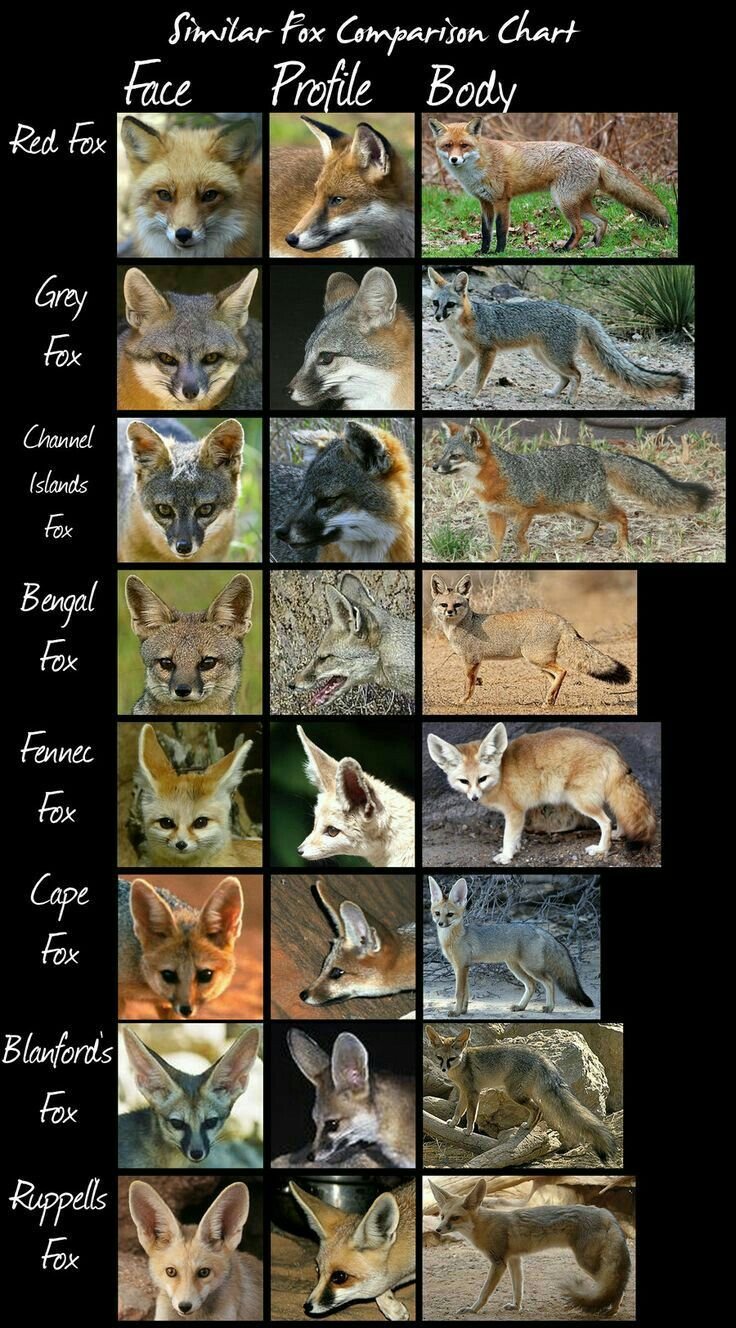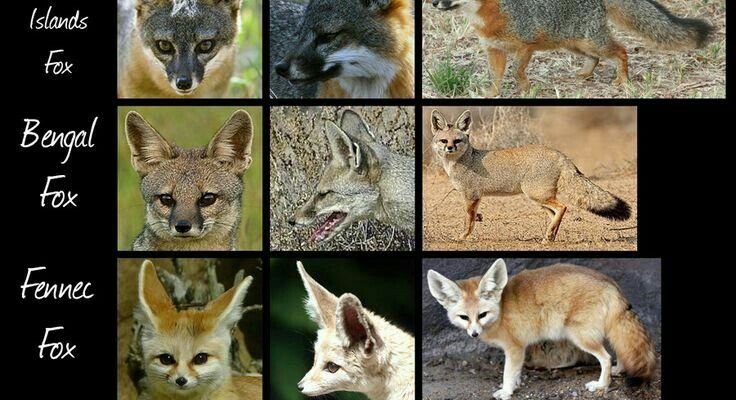
In this article, we’ll explore 10 animals that are similar to the red fox and discuss what sets them apart. By the end, you’ll not only be able to identify a red fox but also recognize its lookalikes. So grab your favorite drink, and let’s dive into the fascinating world of these cunning canines!
1. Gray Fox
The gray fox is often found in wooded areas across North America. Similar in size to the red fox, it sports a grizzled gray coat with reddish tinges, especially on its legs and face. Here’s the thing: while the red fox has a more uniform color, the gray fox’s unique coloring gives it a somewhat scruffy appearance.
One of the most interesting features of gray foxes is their ability to climb trees! They have flexible toe pads, which help them navigate branches with ease. If you’re trying to spot a gray fox, look for it near wooded areas or even up in the branches of a sturdy tree. Unlike the red fox, which tends to prefer open fields, the gray fox loves the cover of the woods.
2. Arctic Fox
Next up is the arctic fox. Picture a small, fluffy creature that thrives in some of the coldest environments on Earth. Unlike the red fox, which boasts a striking reddish hue, the arctic fox has a thick white coat in winter, helping it blend into the snowy landscape. During the summer, its coat changes to a brownish-grey, making it look more like a warm, furry pillow than a predator.
Arctic foxes have some fascinating adaptations that help them survive harsh climates. Their rounded bodies and short snouts reduce heat loss, making them perfectly equipped to handle icy conditions. If you ever find yourself in the Arctic, keep an eye out for these cuties, but remember—they’re much smaller than red foxes!
3. Fennec Fox
If you thought the red fox was cute, wait until you see the fennec fox! This little guy is known for its oversized ears, which help dissipate heat in its desert habitat. Native to the Sahara, fennec foxes are much smaller than red foxes, standing only about 10 inches tall. Their sandy coats provide excellent camouflage against the dunes, allowing them to remain hidden from predators.
Although they have a similar face structure, fennec foxes have a more delicate appearance, with a shorter snout and, of course, those massive ears! Instead of hunting in open fields, these foxes dig underground burrows to escape the heat during the day. So when you think of a fennec, imagine a tiny, adorable fox that’s perfectly adapted to desert life.
4. Swift Fox
The swift fox is another relative of the red fox. Found in the grasslands of North America, this smaller fox has a similar body shape but is often lighter in color and features a more slender frame. With its petite size, you might mistake it for a kitten if you catch a glimpse from a distance.
Swift foxes are known for their agility and speed—they can outrun many predators. They usually have a pale yellowish coat, which helps them stay hidden in the golden grasslands. When identifying a swift fox, pay attention to its quick movements and agility in the field; it often resembles a little shadow darting through the grass.
5. Kit Fox
The kit fox is yet another small fox species that bears a resemblance to the red fox but is even smaller. These foxes are primarily found in the southwestern United States. With large ears and a slender body, they are highly adapted for desert living, similar to fennec foxes. Their coats are a mix of light tan and gray, which helps them blend into their arid environment.
What’s interesting about kit foxes is their behavior. They are predominantly nocturnal, so you’ll likely only see them at night. Their keen sense of hearing helps them locate prey even in complete darkness. If you ever hear unusual rustling sounds in the desert at night, you might just be encountering a kit fox in its natural habitat!
6. Coyote
Coyotes have a reputation for being wily—think of them as the red fox’s larger cousin. With a more elongated body and long legs, coyotes are generally bigger than red foxes, weighing between 24 to 46 pounds. Their coats vary from gray to brown, with a bushy tail that often has a black tip.
While red foxes are solitary, coyotes tend to live in family groups. They are adaptable creatures found in various environments, from urban areas to the wild plains. If you see a larger canid with a more robust build, chances are it’s a coyote rather than a red fox.
7. Jackal
The jackal is another interesting animal that shares some similarities with the red fox, particularly in terms of body shape and size. Jackals have slender bodies and long legs, which give them an elegant appearance. They live in Africa, the Middle East, and parts of South Asia, often inhabiting savannas and arid regions.
Their coats usually feature a mix of gold and brown colors, but unlike red foxes, they have a more pronounced, elongated snout. Jackals are known for their scavenging habits, often feeding on carrion. So while they may look similar from afar, if you spot one, pay attention to their behavior—they’re quite different from the clever red fox!
8. Dhole
Dholes, or Asiatic wild dogs, are a unique species that can easily be mistaken for red foxes at first glance. They have a similar size and a bushy tail like the red fox, but their coats are a reddish-tan color. Dholes are social animals and often hunt in packs, which sets them apart from the solitary nature of red foxes.
These dogs are native to Asia and are known for their high-pitched whistles and yaps. While a red fox might be more stealthy and cunning, dholes rely on teamwork during hunts. If you happen to come across one in the wild, you’ll recognize them not just by their color but by their lively, social behavior.
9. Raccoon Dog
The raccoon dog (or tanuki) is a unique animal that looks a bit like a fox but is more closely related to raccoons. They have a stocky build, round face, and distinctive fur pattern that includes a mix of browns and grays, giving them a somewhat fox-like appearance.
Raccoon dogs are nocturnal and are found in East Asia and parts of Europe. They have a more playful and curious nature compared to the more reserved red fox. When distinguishing between the two, note the raccoon dog’s bushy, ringed tail and more rounded face. They might look adorable, but they also have a reputation for being quite mischievous!
10. Tasmanian Devil
Lastly, the Tasmanian devil may not immediately come to mind when thinking about foxes, but their small size, facial features, and overall body shape lend them a fox-like silhouette. Native to Tasmania, these carnivorous marsupials have a stocky build and a dark, shaggy coat.
Although they can look similar, Tasmanian devils are much more robust than red foxes and have a strong bite. They are known for their haunting screams and raucous feeding habits, producing sounds that can send a chill down your spine! So even though they share some visual traits, their behavior and vocalizations make them distinctly different.
Now that you know about these 10 animals similar to the red fox, you can appreciate the diversity in the world of canids and their relatives. Each of these creatures has unique traits that set them apart, whether it’s their size, coat color, or behavior. Next time you’re outdoors or flipping through a wildlife documentary, remember these comparisons. There’s so much to learn and discover about our furry friends! Whether it’s a sly red fox or one of its look-alikes, each animal plays its role in the ecosystem and adds to the richness of our wildlife.

